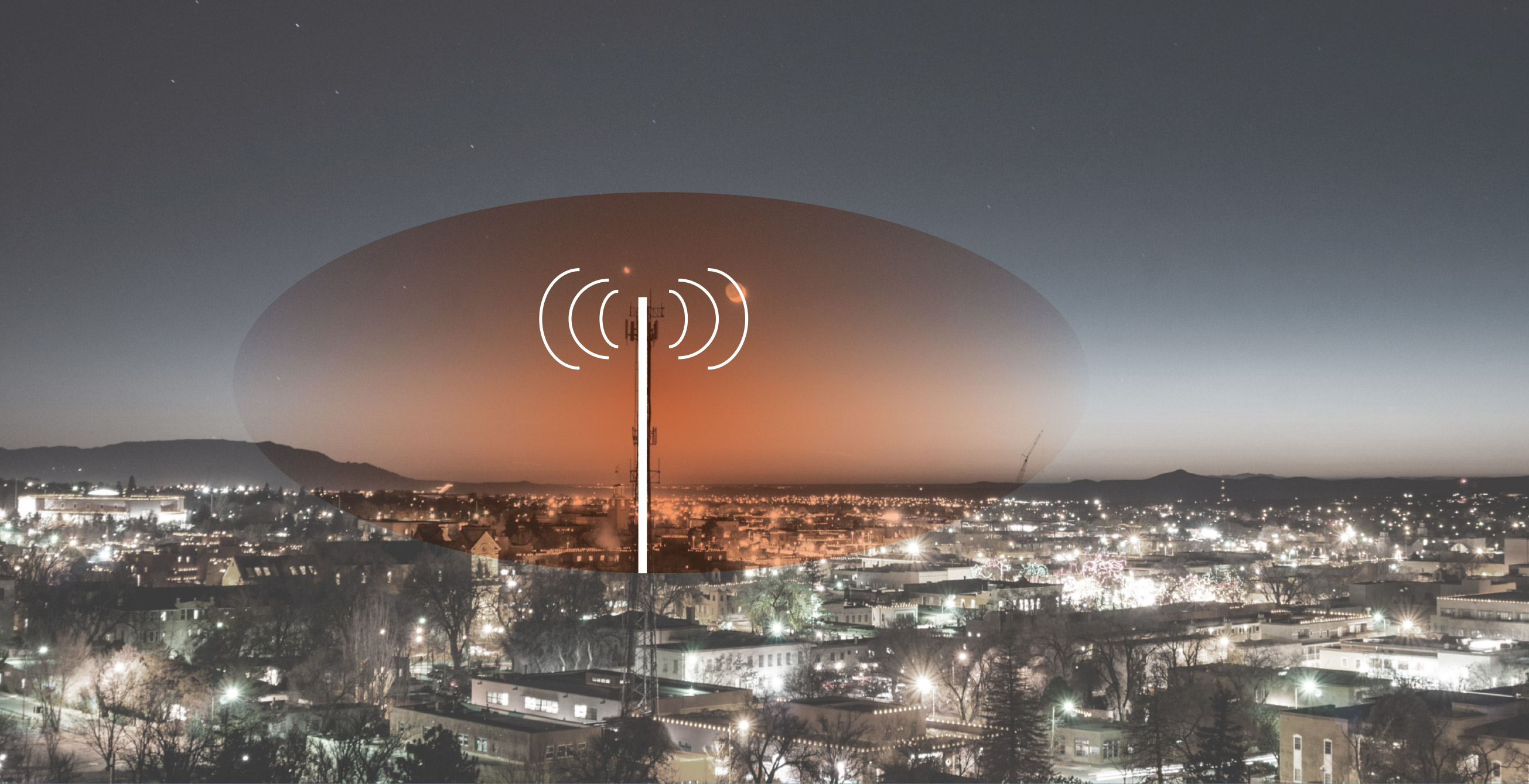Next Generation Local Zoning Authority: 5G Wireless Broadband 101
Upcoming Events
Related News
Introduction
5G describes the next generation of mobile networks which builds on today’s 4G wireless broadband infrastructure. This next generation of wireless service uses higher-frequency wavelengths transmitted through a network of “small cell” devices – roughly the size of a backpack – scattered throughout communities. To build 5G networks, telecommunications providers place small cells on public rights-of-way to construct their own communications networks. Analysts expect the full buildout of the 5G network will require nearly one million small cell installations over the next decade.
Counties are strongly committed to the timely and successful deployment of 5G facilities and services throughout the nation, just as counties led and supported public and private partnerships that resulted in the successful introduction and expansion of 4G infrastructure and services. However, as stewards of substantial amounts of public rights-of-way, counties are concerned with recent federal actions that undermine local governments’ ability to serve as trustees of public property, safety and well-being.
Definitions
G |
The mobile industry refers to new “generations” – or Gs – each time it introduces a new industry-wide technical standard and rebuilds the fundamentals of mobile data networking. New generations have been introduced roughly once every decade. |
LTE |
In telecommunication, Long-Term Evolution (LTE) is a standard for high-speed wireless communication for mobile devices and data terminals. The goal of LTE was to increase the capacity and speed of wireless data networks using new technologies developed around the turn of the millennium. When describing cellular networks, you’ll commonly hear the terms 3G, 4G, and LTE. This identifies the generation of network technology: 3G, or the third-generation network, was developed before 4G. After that, LTE data was introduced; currently, 4G LTE is the most advanced option available. |
Small cells |
As the name implies, these devices for providing network service are smaller than a traditional cell tower, but as a result must be placed much more closely to one another. |
Latency |
The amount of delay, or lag in response, in a network. Reducing latency is one of 5G’s main advantages, along with faster speeds once a response has started. |
Spectrum |
The frequency of airwaves used to carry cell phone signals. 5G uses a wide swath of airwaves, including higher frequencies than have been used in the past. |
Millimeter wave |
This ultra-high-frequency signal is key to getting the fastest speeds out of 5G. These signals are also fragile, traveling comparatively small distances and easily blocked by buildings and other objects, and therefore require more transmission points over a larger area for complete coverage. |
Fixed wireless |
Fixed wireless is the wireless system used to connect two fixed locations (e.g., building-to-building or tower to building) with a wireless broadband link. |
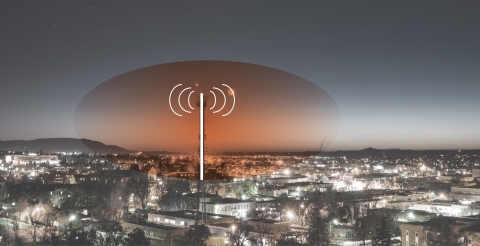
How the Technology Works |
|
4GThe current 4G communications network utilizes a single tower antenna that broadcasts long-wavelength radio frequencies which penetrate most above-ground structures and travel farther than high-frequency waves. |
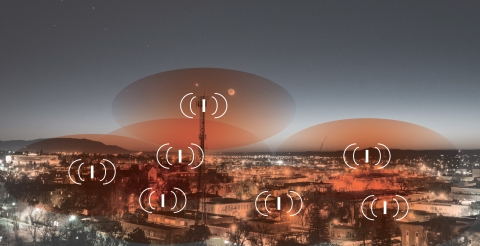
5G5G networks use a higher-frequency millimeter wave capable of relaying more information in less time than 4G signals. 5G waves, however, are not capable of traveling as far as their 4G predecessors and will require a network of small cells to distribute wireless services. The highly-concentrated network of small cells will allow moving devices to receive a signal from one cell to the next without disruption. |
|
Deployment |
5G Deployment Process
5G deployment will require telecommunications providers to install hundreds of thousands of small cells across the country to construct 5G networks. The vast majority of these sites will be located on locally-owned public rights-of-way, which requires providers to submit applications for local government review. The local review process is essential to ensure small cell sites do not put public health and safety at risk during the construction and modification of broadcasting facilities. Due to the significant number of small cell sites needed to fully deploy 5G, close coordination between wireless service providers and local governments is critical during the siting process.
5G’s reliance on a large network of small cell sites will place a considerable administrative strain on local governments’ ability to process the exponential increase in applications for small cells from service providers.
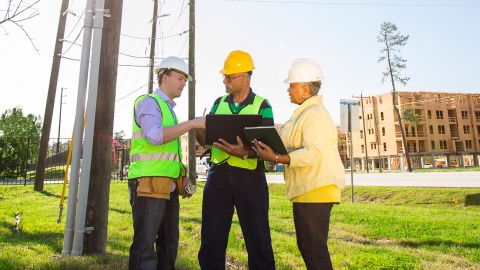
Race to 5G
5G-ready smartphones will be rolled out incrementally due to the labor-intensive deployment process, with the first batch being deployed in 2019. The four major wireless service providers – AT&T, Verizon, Sprint and T-Mobile – plan to offer 5G service in the first half of 2019, though each are taking a different path to deployment.
AT&T began offering 5G-powerd mobile hotspots in a dozen cities in 2018 and recently unveiled their new line of 5G-ready phones for businesses in 2019.
Verizon current offers 5G internet service in four markets and will provide 5G mobile service by 2019.
Sprint owns unique airwaves that will give the company an advantage as it works on eventually rolling out 5G smartphone service in nine cities in 2019.
T-Mobile plans to offer 5G smartphone service in 2019 to customers in New York, Los Angeles, Dallas and Las Vegas.
Sprint and T-Mobile proposed merger, which is still awaiting regulatory approval, will accelerate their 5G efforts.
|
County Impact |
The global race for 5G dominance has begun as broadband providers jockey for the top spot as the industry leader. As broadband providers push to deploy thousands of small cell sites in communities nationwide, local governments are tasked with evaluating every proposed site. This requires significant labor resources and administrative costs, which are offset through application fees. However, communication providers argue that local zoning authority aimed at remediating safety hazards is impeding on their ability to compete. While the technology is relatively new, efforts to undermine local zoning authority have been underway for quite some time at the federal and state policymaking levels.
State 5G Legislation
Half of U.S. states have enacted legislation that preempts local zoning authority in preparation for the 5G buildout. The enacted provisions will allow providers to curtail local zoning authority and install small cell technology in public rights-of-way while also placing a cap on fees associated with maintenance costs. The legislation has been controversial in many states. With concerns over potential health implications and restrictions on local authority over public rights-of- way, some states are fighting back. For instance, California Gov. Jerry Brown (D) vetoed a small cell bill in October 2017, noting that localities required “a more balanced solution.” Similar legislation has also failed in six other states and remains pending in Michigan and Pennsylvania.
Meanwhile, the fight over local control of public rights-of-way has been elevated to the federal level as the Federal Communications Commission (FCC) and Congress are now working to develop and implement national standards.
States with Legislatures that Have Passed Legislation restricting local zoning authority for 5G deployment
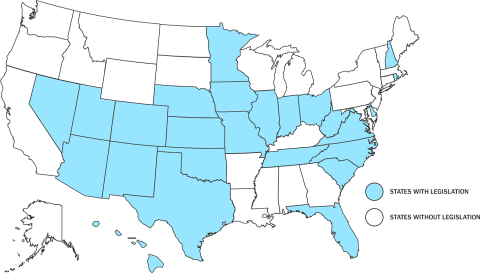
|
Federal Action |
Both Congress and the FCC have taken steps to enact policies aimed at accelerating 5G deployment nationwide. However, the measures target local governments by restricting local authority. In June 2019, the STREAMLINE Small Cell Deployment Act (STREAMLINE Act) was reintroduced in the U.S. Senate, which limits fees local governments can charge providers and narrows the review process for counties to adequately assess 5G deployment applications. Prior to the bill’s reintroduction, the FCC approved a controversial rule in September 2018 setting national standards on the local permitting process when siting 5G small cell locations, which went into effect January 14, 2019.
STREAMLINE Small Cell Deployment Act
In June 2019, Sen. John Thune (R-S.D.) and Sen. Brian Schatz (D-Hawaii) reintroduced the STREAMLINE Act (S. 1699) in the 116th Congress. The legislation would limit fees local governments are able to assess telecommunications companies and includes two shot clocks for localities to review and process applications. The bill also includes a “deemed granted” provision, under which applications would be automatically approved if the local government fails to complete its evaluation within the set timeframe – which would be considered a prohibition of service. This provision would severely jeopardize counties’ ability to fulfill our public health and safety responsibilities.
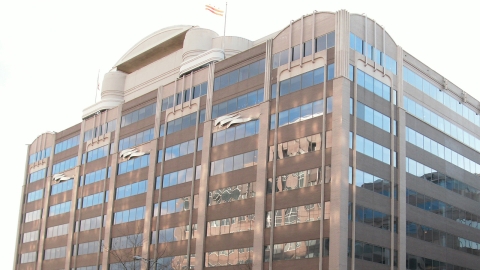
FCC HQ in Washington, D.C. Photo credits: Ser Amantio di Nicolao, Wikipedia
FCC Ruling
On September 26, the FCC approved the Streamlining Deployment of Next Generation Wireless Infrastructure Declaratory Ruling and Third Report and Order on a 3-to-1 vote. The order limits fees local governments are able to assess on telecommunications companies for the placement, construction or co-location of new wireless service facilities. Additionally, the ruling provides local governments only 60 days to evaluate applications from wireless companies to attach 5G small cells to existing structures and just 90 days to review applications for equipment on entirely new structures. These “shot clocks” effectively prevent local governments from properly evaluating and assessing 5G deployment applications and forces a rubber-stamp approval process in fear of crippling litigation from communication providers. However, unlike the STREAMLINE Act, the FCC order does not include the strict “deemed granted” provision.
The FCC’s controversial order went into effect on January 14, 2019. In response to the ruling, several lawsuits were filed in federal appeals courts questioning the legality of the FCC rule. As a result, the order is currently being challenged in the United States Ninth Circuit Court of Appeals. The appellate court is expected to release a decision sometime this year.
FCC Ruling Frequently Asked Questions
What happens if a local government already has an agreement with a carrier or infrastructure provider that covers small wireless facilities?
The FCC did not address whether existing agreements are preempted by the order, and local governments should be able to retain existing agreements. For those to be void, the FCC would have to find that ending existing agreements was in the public interest, which it did not do in the order.
For carries to preempt or void an existing agreement, they must file a lawsuit against the municipality, which is unlikely.
Going forward, can a local government negotiate new agreements with carriers or infrastructure providers? If so, are there issues that cannot be addressed in an agreement?
Yes, local governments can still negotiate with carriers and infrastructure providers. However, the order gives carriers more leverage when negotiating with local governments and reduces the ability of local governments to enact certain regulations.
The FCC ruling provides guidance on some parameters of the deployment of small cells, including the cost, aesthetic requirements and location, but it does not prohibit local governments or carriers from reaching their own arrangements on these or any other factors.
Source: Next Century Cities
FCC Ruling: A Closer Look
The FCC order makes several adjustments to the permitting processes regarding 5G wireless broadband. Highlighted below are important changes county officials need to know.
Antenna Placement |
The order states local governments cannot issue blanket denials for placing 5G antennas on poles in a given area. However, counties may deny a specific placement if there is a reasonable alternative. |
Underground |
The order states local governments cannot require all 5G infrastructure be placed underground, though counties may be able to require the entire “small cell” except for the antenna be placed underground. However, if local officials make this request, they must do so for all utilities and an ordinance must be in place. |
Street Furniture |
The order states local governments can require street furniture with a 5G small cell meet a certain aesthetic standard and be set back from the street a minimum distance for both aesthetic and public safety reasons, such as to prevent loss of parking due to inability to open car doors. Again, localities must have an ordinance in place that applies to all utilities in public rights-of-way. |
Shrouding |
The order states local governments can require a standard of aesthetics for certain neighborhoods and certain types of poles. |
Permitting |
Now is a perfect opportunity for local governments to revise and organize their permitting processes. When doing so, counties should adopt a permitting process that incorporates policies that adhere to the shot clocks in the FCC order, so the county will be compliant going forward. |
Shot Clock Deadlines |
The specific shot clock deadlines set by the FCC are covered on page 24 of this report. However, unlike the proposed STREAMLINE Act, the FCC ruling does not include a “deemed granted” provision, under which applications would be immediately approved if the local government fails to complete the evaluation in the set time frame. |
Application Costs |
The costs listed in the order are for guidance purposes. If local governments stay at or below them, the application fees will most likely not be challenged in court. However, counties may charge more if there is evidence that local administration costs are higher. Including engineering costs, permitting staff costs, and post-installation inspection costs may justify a higher application fee. |
Annual Fee |
If a county sets its annual fee at or below the cost specified by the order ($270/year), carries are less likely to challenge them in court, since it will be in line with the FCC order. However, if a local government chooses to set a higher fee, this could require the municipality to justify the higher fee as being directly related to cost. |
Negotiating |
Carriers prioritize predictability when working and negotiating with local governments. By providing a high degree of certainty that permits will be finished in a predictable manner, counties may be able to ask carriers to negotiate higher fees or more public interest requirements than those set by the FCC. |
Source: Next Century Cities
STREAMLINE Act vs FCC Ruling
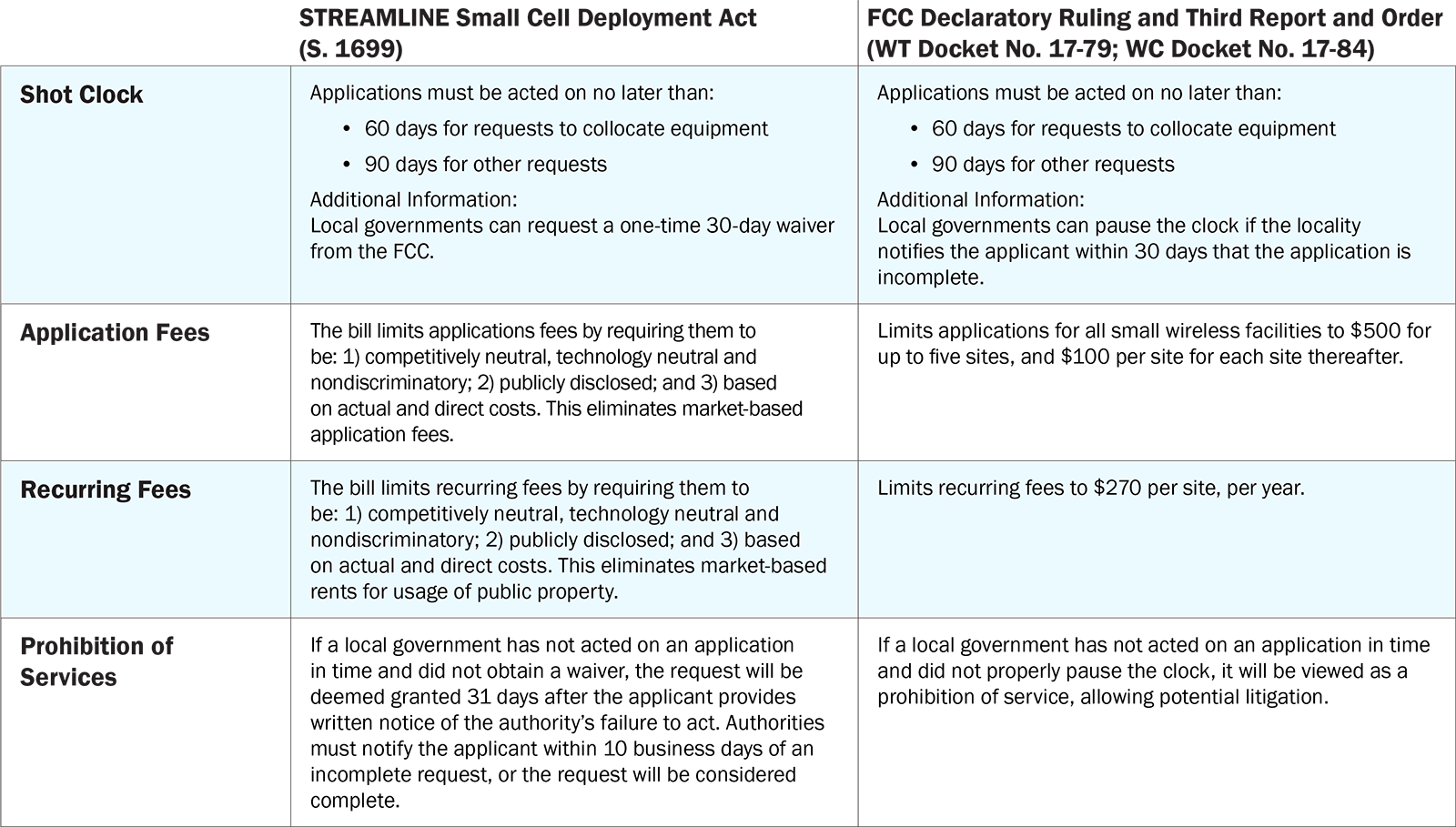
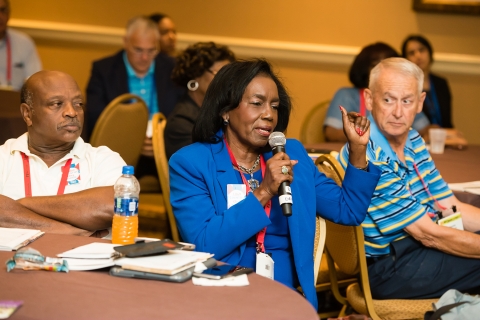
County Response & Taking Action |
County Response
Local governments have expressed concerns that the proposed Senate bill and the FCC ruling would significantly limit local governments’ ability to properly regulate public property and rights-of-way. Narrowing the window for evaluating 5G deployment applications would effectively prevent local governments from properly examining the impact that construction, modification or installation of broadcasting facilities may have on the public health, safety and welfare of the local community.
How You Can Take Action
STREAMLINE Small Cell Deployment Act
The path forward for the STREAMLINE Act is unclear. The legislation has been introduced in the Senate, but has not seen any action. In the House of Representatives, a companion bill has yet to be introduced.
NACo encourages county officials to tell their members of Congress to oppose the STREAMLINE Act.
H.R. 530/S. 2012
The FCC 5G regulation went into effect on January 14, 2019 and counties nationwide now face enforcement action if wireless providers or other small cell applicants challenge them in court. H.R. 530 and S. 2012 would electively rescind the controversial rule and retain local authority of public rights-of-way.
NACo urges county officials to ask their members of Congress to support and cosponsor H.R. 530 and S. 2012, particularly members who serve on the House Committee on Energy and Commerce and Senate Committee on Commerce, Science and Transportation.
U.S. Senate Committee on Commerce, Science and Transportation
The STREAMLINE Act is currently introduced in the U.S. Senate and falls under the jurisdiction of the Senate Committee on Commerce, Science and Transportation. To date, the committee has held two hearings on 5G wireless broadband but has not taken any action on the STREAMLINE Act.
Majority
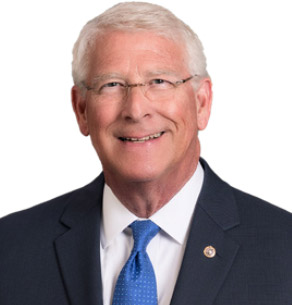
Roger Wicker (R-Miss.)
Chairman
|
Sen. John Thune (R-S.D.) |
|
Sen. Roy Blunt (R-Mo.) |
|
Sen. Ted Cruz (R-Texas) |
|
Sen. Deb Fischer (R-Neb.) |
|
Sen. Jerry Moran (R-Kan.) |
|
Sen. Dan Sullivan (R-Alaska) |
|
Sen. Mike Lee (R-Utah) |
|
Sen. Ron Johnson (R-Wis.) |
|
Sen. Shelley Moore Capito (R-W.Va.) |
|
Sen. Cory Gardner (R-Colo.) |
|
Sen. Todd Young (R-Ind.) |
|
Sen. Marsha Blackburn (R-Tenn.) |
|
Sen. Rick Scott (R-Fla.) |
Minority

Maria Cantwell (D-Wash.)
Ranking Member
|
Sen. Amy Klobuchar (D-Minn.) |
|
Sen. Richard Blumenthal (D-Conn.) |
|
Sen. Brian Schatz (D-Hawaii) |
|
Sen. Edward J. Markey (D-Mass.) |
|
Sen. Tom Udall (D-N.M.) |
|
Sen. Gary Peters (D-Mich.) |
|
Sen. Tammy Baldwin (D-Wis.) |
|
Sen. Tammy Duckworth (D-Ill.) |
|
Sen. Jon Tester (D-Mont.) |
|
Sen. Krysten Sinema (D-Ariz.) |
|
Sen. Jacky Rosen (D-Nev.) |
U.S. House Committee on Energy and Commerce
H.R. 530 falls under the jurisdiction of the House Committee on Energy and Commerce. To date, the committee has not taken any action on H.R. 530.
Majority
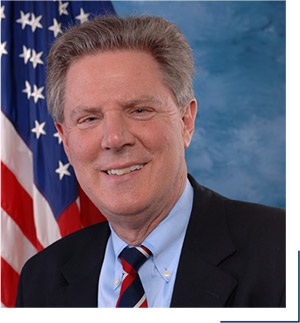 Roger Wicker (D-N.J.)
Roger Wicker (D-N.J.)
Chairman
|
Bobby L. Rush (D-Ill.) |
|
Anna G. Eshoo (D-Calif.) |
|
Eliot L. Engel (D-N.Y.) |
|
Diana DeGette (D-Colo.) |
|
Mike Doyle (D-Pa.) |
|
Jan Schakowsky (D-Ill.) |
|
G.K. Butterfield (D-N.C.) |
|
Doris Matsui (D-Calif.) |
|
Kathy Castor (D-Fla.) |
|
John Sarbanes (D-Md.) |
|
Jerry McNerney (D-Calif.) |
|
Peter Welch (D-Vt.) |
|
Ben Ray Luján (D-N.M.) |
|
Paul Tonko (D-N.Y.) |
|
Yvette D. Clarke (D-N.Y.) |
|
Dave Loebsack (D-Iowa) |
|
Kurt Schrader (D-Ore.) |
|
Joseph P. Kennedy III (D-Mass.) |
|
Tony Cárdenas (D-Calif.) |
|
Raul Ruiz (D-Calif.) |
|
Scott Peters (D-Calif.) |
|
Debbie Dingell (D-Mich.) |
|
Marc Veasey (D-Texas) |
|
Ann McLane Kuster (D-N.H.) |
|
Robin Kelly (D-Ill.) |
|
Nanette Barragán (D-Calif.) |
|
A. Donald McEachin (D-Va.) |
|
Lisa Blunt Rochester (D-Del.) |
|
Darren Soto (D-Fla.) |
|
Tom O’Halleran (D-Ariz.) |
Minority
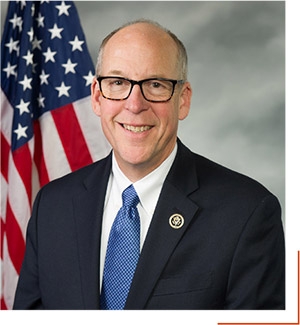
Ranking Member
|
Fred Upton (R-Mich.) |
|
John Shimkus (R-Ill.) |
|
Michael C. Burgess (R-Texas) |
|
Steve Scalise (R-La.) |
|
Bob Latta (R-Ohio) |
|
Cathy McMorris Rodgers (R-Wash.) |
|
Brett Guthrie (R-Ky.) |
|
Pete Olson (R-Texas) |
|
David B. McKinley (R-W.Va.) |
|
Adam Kinzinger (R-Ill.) |
|
Morgan Griffith (R-Va.) |
|
Gus Bilirakis (R-Fla.) |
|
Bill Johnson (R-Ohio) |
|
Billy Long (R-Mo.) |
|
Larry Bucshon (R-Ind.) |
|
Bill Flores (R-Texas) |
|
Susan W. Brooks (R-Ind.) |
|
Markwayne Mullin (R-Okla.) |
|
Richard Hudson (R-N.C.) |
|
Tim Walberg (R-Mich.) |
|
Earl L. “Buddy” Carter (R-Ga.) |
|
Jeff Duncan (R-S.C.) |
|
Greg Gianforte (R-Mont.) |
|
NACo Legislative Staff |

